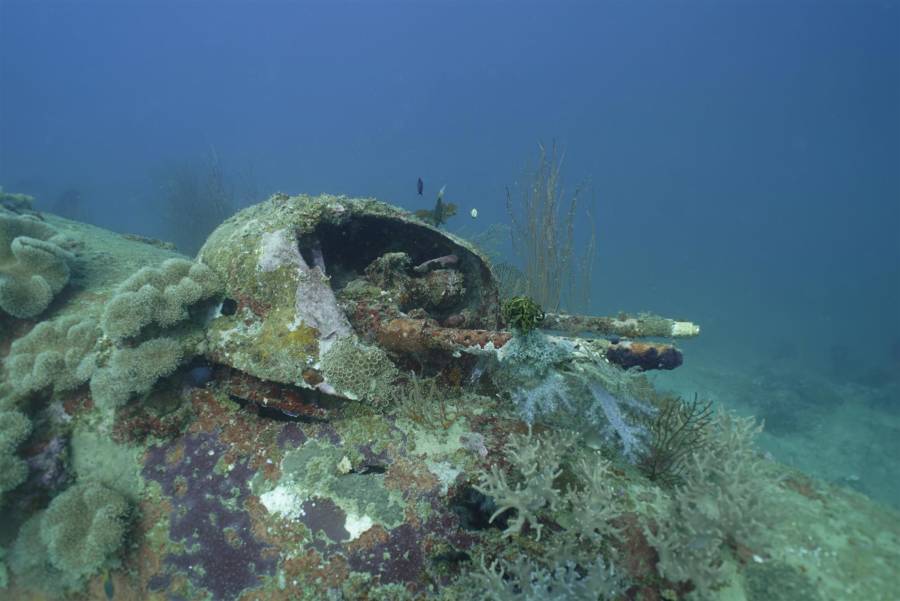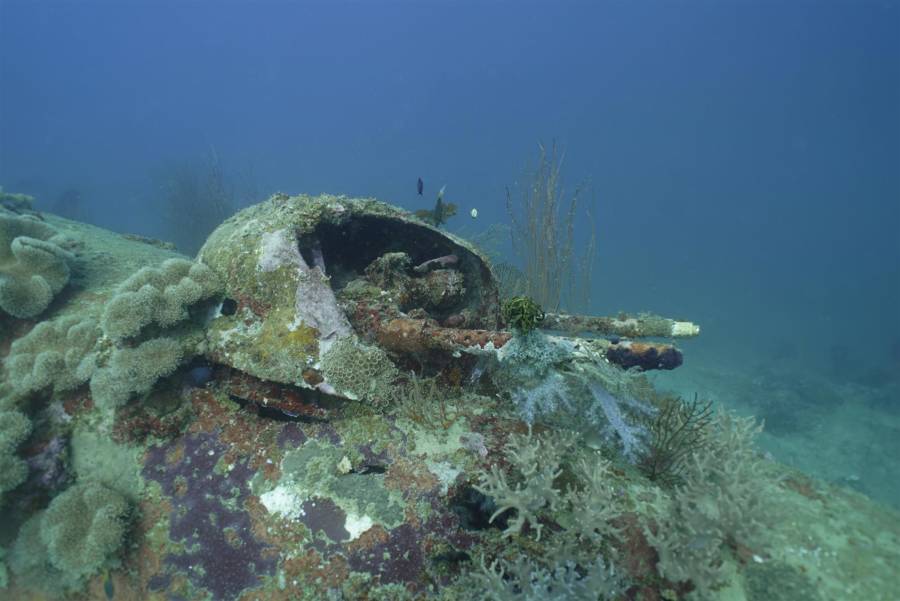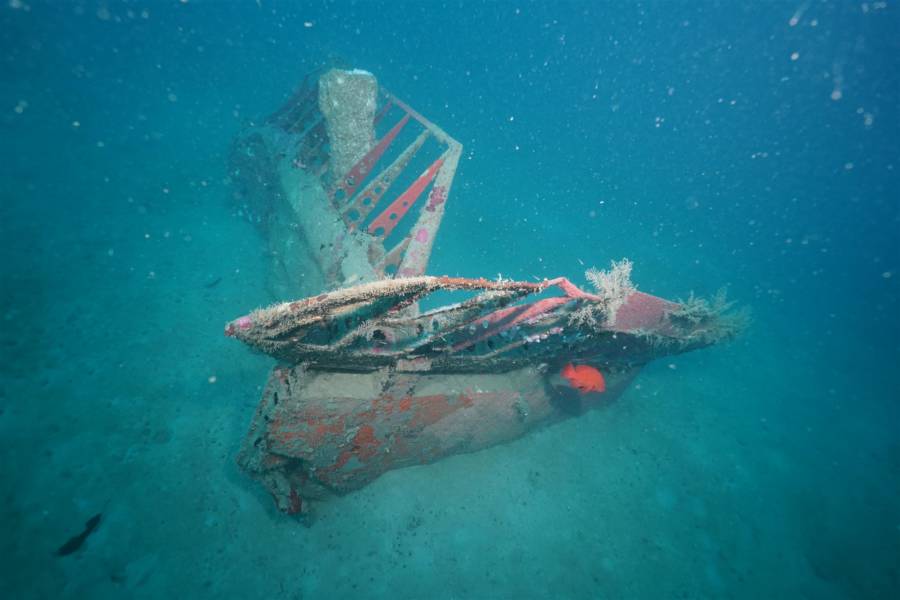
New technology allows researchers to uncover missing American B-52 bombers off the coast of Papua New Guinea.

Project RecoverThe turret of one of the newly discovered bombers.
More than 70 years after American pilots flew these planes in combat against the Japanese, a pair of lost World War II bombers have been found lying at the bottom of the Pacific.
This week, Project Recover — a group dedicated to finding WWII aircraft and MIAs from World War II — announced that its researchers had found the remains of two B-52 bomber planes off the coast of Papua New Guinea.
The research efforts began in February, when Project Recover personnel first used archival data to focus their search region before then scanning the area with sonar and high-definition imagers and ultimately sending both divers and drone craft to the sea floor. There they indeed found what they’d been looking for.
However, uncovering a sunken plane might not play out as many would think. In the words of Project Recover’s Executive Director, Katy O’Connell:
“People have this mental image of an airplane resting intact on the sea floor, but the reality is that most planes were often already damaged before crashing, or broke up upon impact. And, after soaking in the sea for decades, they are often unrecognizable to the untrained eye, often covered in corals and other sea-life.”
Moreover, O’Connell added, “Our use of advanced technologies, which led to the discovery of the B-25, enables us to accelerate and enhance the discovery and eventual recovery of our missing servicemen.”
Indeed, in addition to finding missing crafts, Project Recover hopes to uncover details about missing personnel and perhaps provide some closure for the families who have long been wondering what exactly happened to their loved ones.
“There are still over 73,000 U.S. service members unaccounted for from World War II,” O’Connell said, “leaving families with unanswered questions about their loved ones. We hope that our global efforts can help to bring closure and honor the service of the fallen.”

Project RecoverDamaged tail and left rudder.
“Our team of divers and scientists conducts site surveys to fully document the wreckage,” added Project Recover archaeologist Andrew Pietruszka. “That documentation can then be used by the U.S. government to correlate soldiers still missing in action with the aircraft site we discovered, and to evaluate that site for the possible recovery of remains.”
In this particular case of the two bombers discovered near Papua New Guinea, researchers found that of the six crew members associated with the aircraft, five survived and were taken prisoner by Japanese forces, while the remaining serviceman went down with the craft and is listed as missing to this day.